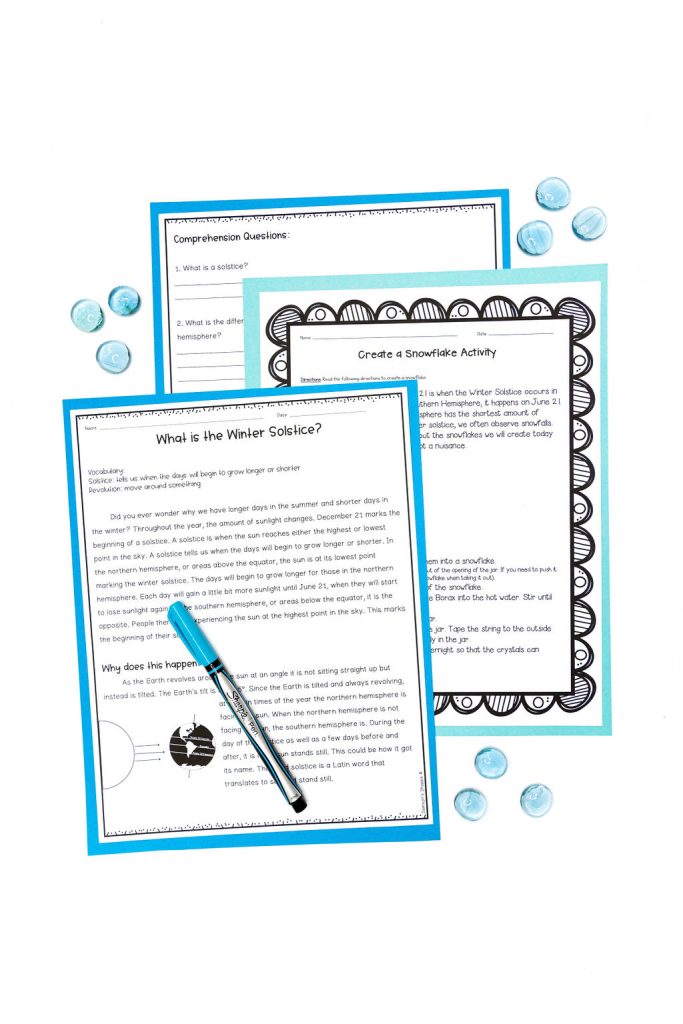
December 21 brings us all things winter! Adding winter activities into your science classroom can engage and motivate students as they dive into fun topics such as snow, blizzards, and winter animals such as polar bears and penguins.
Winter Activities for the Science Classroom
Whether in cold or warm climates, students absolutely LOVE snow. One winter science activity that will help tap into students’ interests is SNOWFLAKES.
In this activity, students will utilize the website to create their snowflakes. Students simply use their Chromebooks, log into the site, and form their snowflakes. The site takes care of the symmetry, and once finished, students can watch all the snowflakes recently created fall. At the time of this blog post, 14 million flakes had been created.
Students will LOVE this activity because they can customize the snowflake to look exactly as they want. In addition, students can share their number with others, who can then type it in and locate the snowflake.
(PLEASE NOTE: The site will ask for a name and email address, neither is needed to complete this activity. Simply ask students to leave blank for anonymity.)
Check out SNOWDAYS on your computer here. (May not work on a phone)
Another fun winter science activity is to learn all about snow. Choosing a WebQuest will give students the ability to learn a lot about snow in a short amount of time. Students will learn the following:
- What snow is
- How snow forms
- Different types of snowflakes
- Winter storms
- Where winter weather most likely occurs
- Ways to stay safe
Using a web activity gives you options to allow students to work independently on the snow activity, in small groups, or with a partner. For example, using a Google Slide resource will enable students to collaborate as they learn.
This activity also works well as sub plans or snow day plans when students work remotely from home.
Hibernation is a fun winter science study. While many of us exaggerate about hibernating, students will learn all about hibernation, the state of torpor, and animals around the world that hibernate.
Students will:
- access a reading to learn about hibernating and
- complete a world map activity as they research different animals that hibernate worldwide.
December 21 is the first day of winter in the northern hemisphere. Teach students why seasons happen and the differences between the northern and southern hemispheres.
December 21 ties in:
- earth’s tilt
- differences between the northern and southern hemispheres
- rotation and revolution
- seasons
A hands on activity to integrate into this lesson is to have students make snowflakes! Whether real or using the site above!







